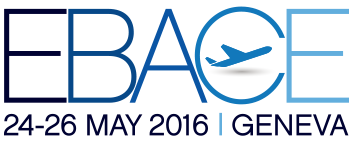Will Business Aviation in Europe Confront a Skills Shortage?
26 May 2016
A business aviation talent crunch – especially for pilots and maintenance technicians – is already starting to bite in the United States. At a 2016 European Business Aviation Convention & Exhibition (EBACE2016) panel, representatives from across the industry considered whether Europe would face the same strains.

“Business aviation in Europe will need 95,000 additional pilots and 101,000 additional maintenance technicians by 2034,” said Christian Weiss, leader of the Hay Group’s practice on organization and workforce design. “As with other technical industries in Europe, it will face a contracting workforce and declining interest in STEM-driven careers.”
At the same time as students are showing less interest in science, technology, engineering and mathematics (STEM), demand is rising for technical skills in information technology, healthcare and other industries. Meanwhile, rapid fleet growth in commercial aviation will create a surge in demand for pilots and technicians.
“Business aviation doesn’t have a shortage itself, but there will be a growth of sectors that will draw talent away from business aviation,” said Weiss.
Attracting Young Professionals to the Industry
To a lesser extent than in the U.S., demographics are affecting the aviation industry in Europe, but age is still a factor in some sectors.
“Among the licensed staff in the UK, the average age is 53,” said Marc Bailey, CEO of BBGA. “There’s this [demographic] pyramid marching along, with nobody coming in at the bottom, and that’s just not tenable.”
Part of the reason young people are not entering the industry is cost. In the U.S., “the cost of becoming a trained aviation professional is very high,” said Sheryl Barden, president and CEO of Aviation Personnel International. “It’s the same as becoming a medical doctor, and for the first five years of your career there’s not an opportunity to earn a living wage.”
As Rosalind Azouzi, head of skills and careers at the Royal Aeronautical Society, explained. The problem with business aviation is: it’s invisible to young people.”
The major aerospace manufacturers, such as Rolls Royce and Airbus, are very active at recruiting talent, and the commercial airlines have a strong career brand. But most students in technical, and even aviation fields, do not know the names of potential business aviation employers.
“Students would love to work in business aviation, but they don’t know the companies, they don’t meet them, the companies don’t come to campuses,” said Azouzi. “Young people are very interested, but they have absolutely no idea how to access the industry.”
The panelists discussed ways to raise business aviation’s profile among graduates from European universities and vocational programs – as well as increasing the percentage of women employed in the industry.
“When I was a kid, you went to a workplace and conformed to it,” said Jonathon Nicol, founder and CEO of Stratajet, “Now, it’s our job to conform the workplace to the talent.”

